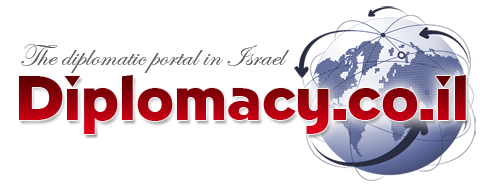Art & Culture
- Details
- Written by Silvia Golan & Stephen Abrahams
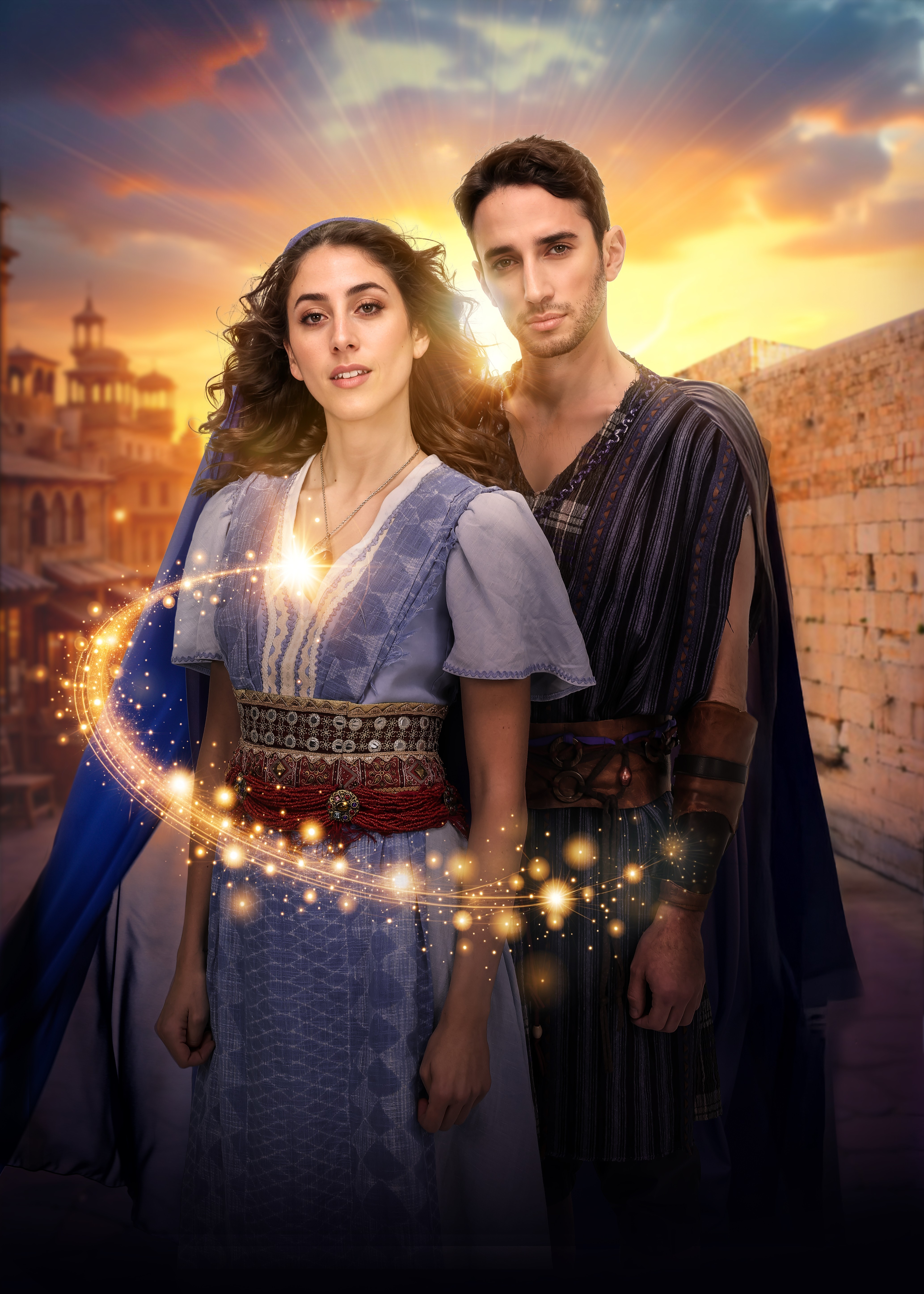
A Musical Sensation "This is Jerusalem" - Every Wednesday and Thursday at 20.30 hs
Discover the history of Jerusalem from the creation of the world to the era that will follow the reconstruction of the Third Temple. Through the captivating love story of Nava and Ynon, profound and universal messages from the people of Israel are revealed, offering an inspiring vision for building a better humanity.
Photos Shlomit Amir
- Details
- Written by Embassy of India
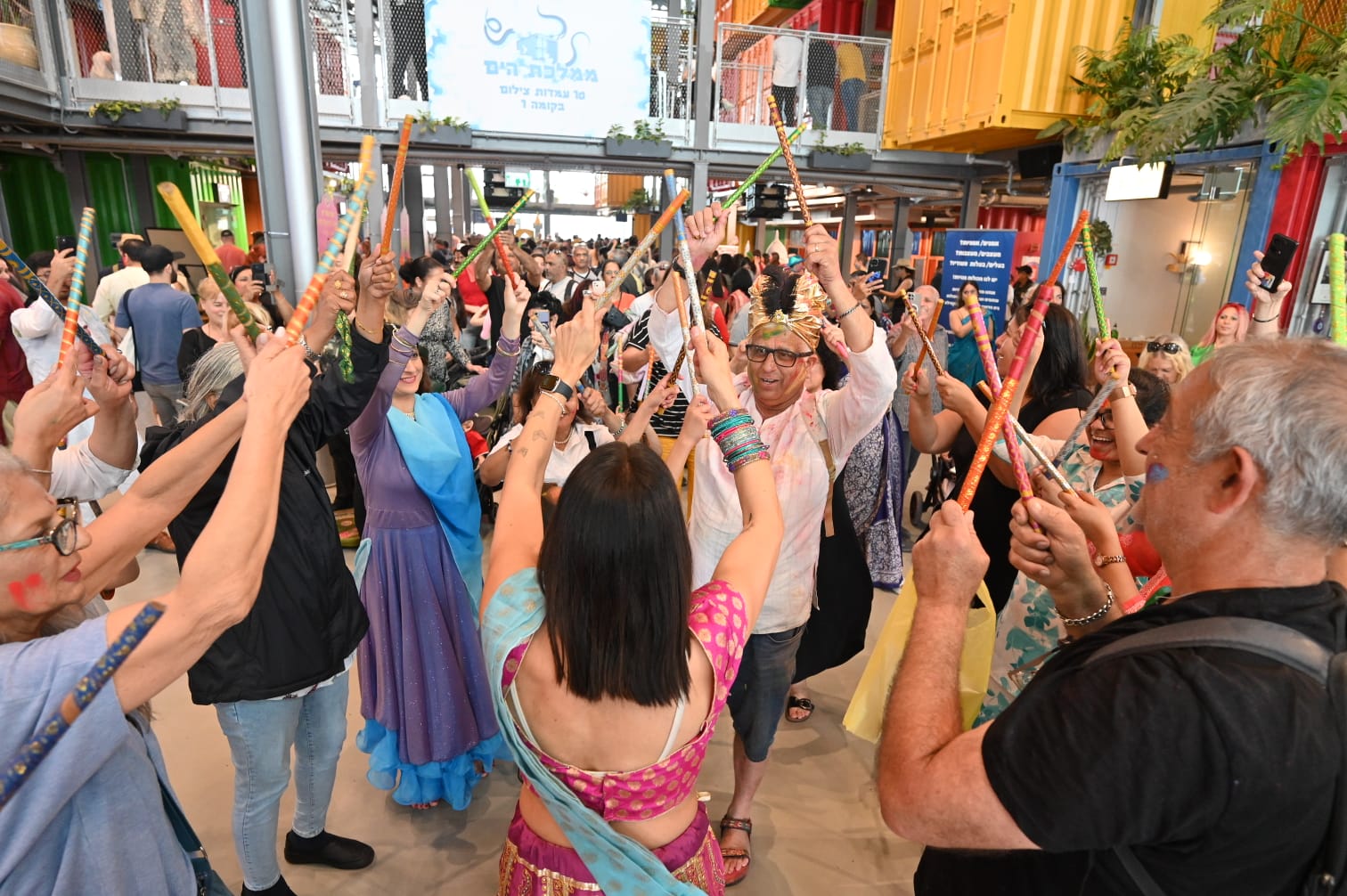
The Embassy of India in Israel, in collaboration with the Jaffa Port and Municipality of Tel Aviv-Yafo, organized an event "India at Jaffa Port" on March 16, 2025, celebrating Indian festival of Holi and Israeli festival of Purim. The event showcased the rich cultural heritage of India at Jaffa Port, attracting more than 3000 attendees.
“India at Jaffa Port- celebrating Purim-Holi”
Celebrating the Indian festival of Holi and the Jewish festival of Purim, the Embassy of India, in collaboration with the Tel Aviv-Yafo, organized the "India at Jaffa Port" event on March 16, 2025.
The event showcased the rich cultural heritage of India at the Jaffa Port, featuring a classical dance ensemble, Bollywood dance workshops, and many other features of India's vibrant traditions.
The event saw a footfall of more than 3000 attendees from many places of Israel.
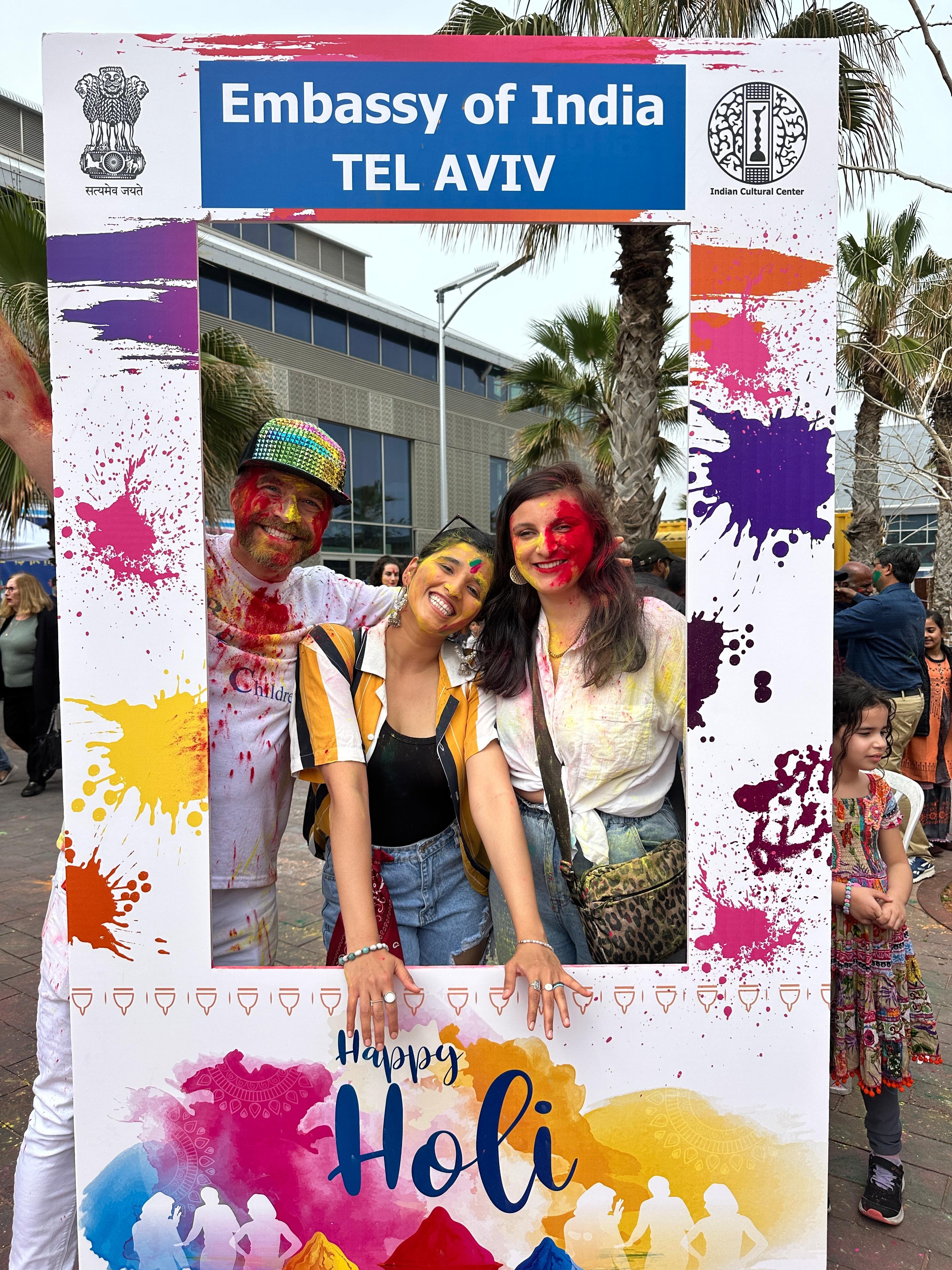
Deputy Ambassador Mr Rajiv Bodwade said :
"I'm Happy to tell you that the Embassy of India in Collaboration with the Municipality of Tel Aviv Yafo is celebrating the Indian Festival of Holi and the Jewish festival of Purim today, here in Jaffa Port. Interestingly, two of these festivals fall on the same day every year, that's because India and Israel traditionally have been following the lunar Calendar. This is just one of many examples of the cultural similarity that we share and this also gives rise to the unique and rich friendship between the two countries. While the rest of the world is focusing on the cultural distinctiveness, India and Israel are happy to celebrate their similarity . Chag Purim Sameach and Happy Holi.
Photos courtesy Embassy of India / Credit for the pictures: Ran Eliyahu
- Details
- Written by Silvia Golan & Stephen Abrahams
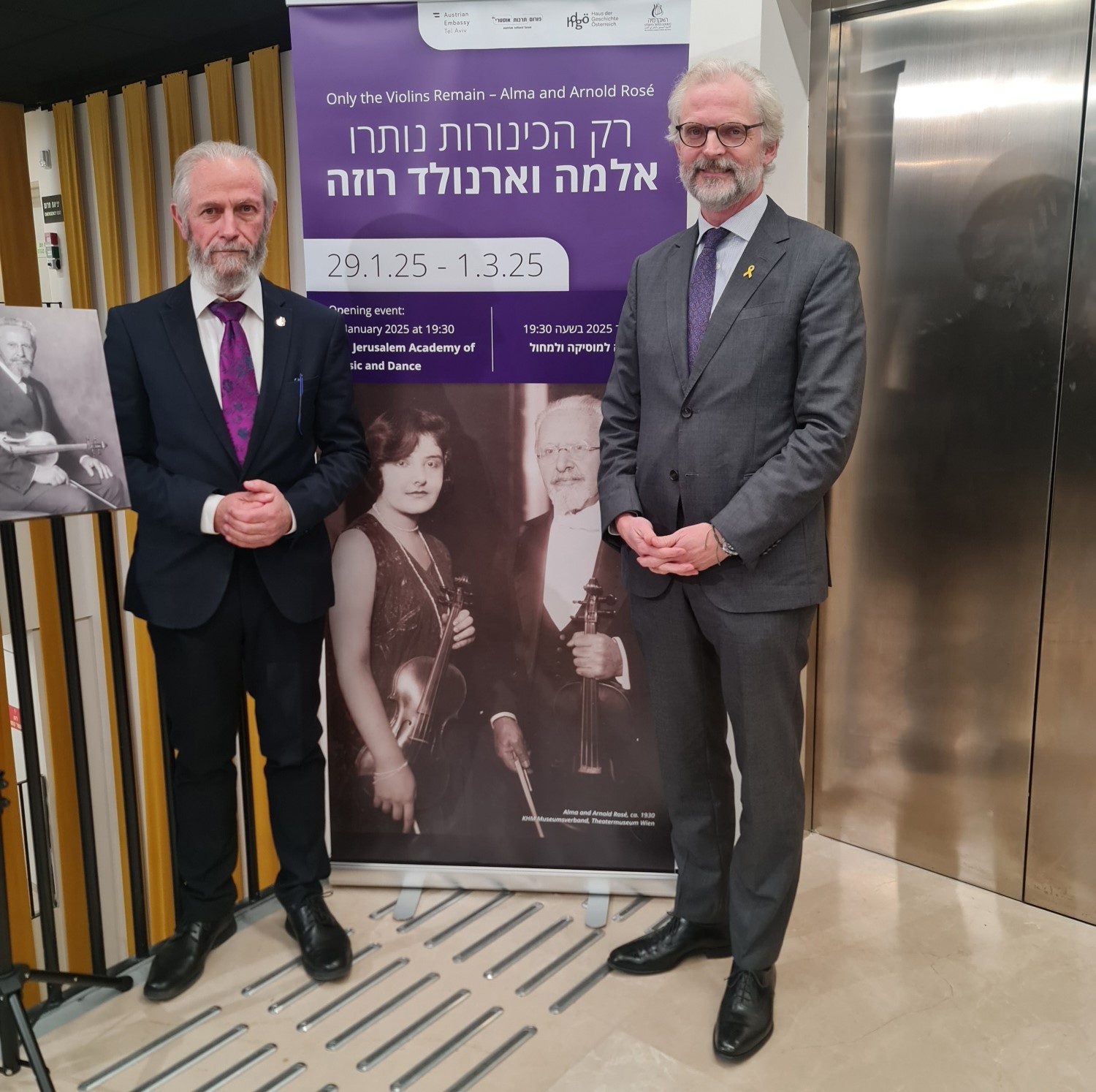
On Wednesday, 29 January 2025, H.E. Mr. Nikolaus Lutterotti, Ambassador of Austria to the State of Israel, in collaboration with Prof. Michal Klinghoffer, President of the Jerusalem Academy of Music and Dance and Ms. Laura Stock, Director of the Austrian Cultural Forum in Tel Aviv, hosted a commemorative International Holocaust Remembrance Day and 80th Anniversary of the Liberation of Auschwitz - Birkenau photographic exhibition and concert entitled "Only The Violins Remain - Alma and Arnold Rose" at the Jerusalem Academy of Music and Dance.
More Pics & videos at Facebook Diplomacy Israel / Israel Diplo / Silvia G Golan
- Details
- Written by Israel Antiquities Authority
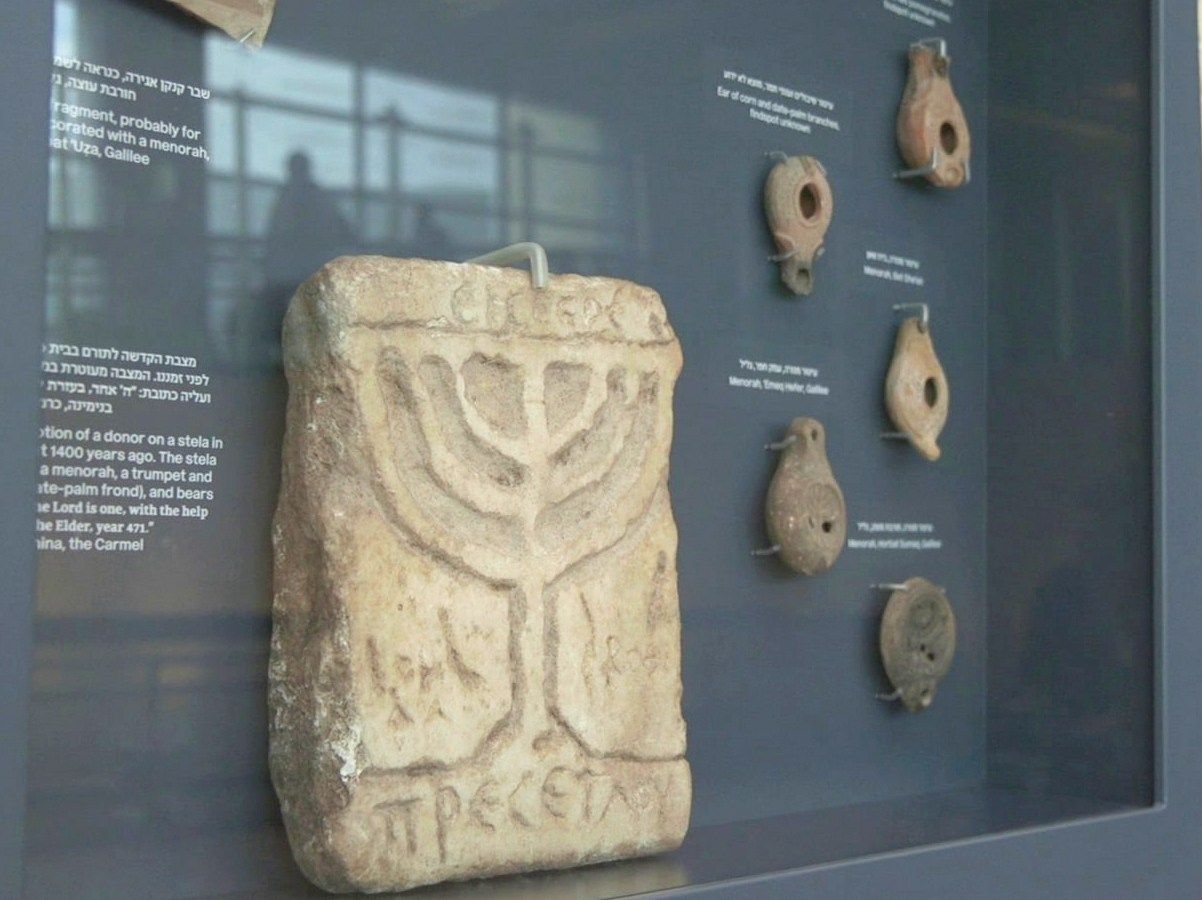
Netzach Israel—The Eternity of Israel”
A new exhibition at Ben Gurion Airport takes passengers on an important journey through the history of the people of Israel.
A cache of coins from the Hasmonean rebellion, evidence of the name “Ahab”, a stone from the Western Wall weighing 5 tons and the weapons of long-gone conquerors—The Israel Antiquities Authority, the Airports Authority and the Ministry of Heritage, supported by the Leona M. and Harry B. Helmsley Charitable Trust, set up an extraordinary exhibition along the airport exit passage, combining archaeological findings and photographs of rare moments of discovery, which tell the story of and continuity of the Jewish people over 3,000 years
TEL AVIV, February 12, 2025 – A new exhibition “Eternity of Israel” opened today (Wednesday) at Terminal 3 of Ben-Gurion Airport, providing visitors an opportunity to explore the history of Israel through archaeological findings and photos from rare moments of discovery.
The exhibition was unveiled alongside Former Israeli Minister of Heritage Amichai Eliyahu; Israel Antiquities Authority Director Eli Escusido; and the National Airport Authority of Israel Managing Director, Udi Bar-Oz.
The exhibition takes passengers on a journey through the story of the people of Israel – one of strength, challenges, upheavals, and revival, spanning thousands of years and illustrating the power of the people's renewal.
This new exhibition, the result of the joint efforts of the Israel Antiquities Authority, the Airports Authority and the Israeli Ministry of Heritage, will be on display along the airport’s exit passage through January 2026. “Eternity of Israel” is supported by the Leona M. and Harry B. Helmsley Charitable Trust.
“Helmsley remains committed to supporting the people of Israel and strengthening the global understanding of Israel,” says Sandor Frankel, a Trustee of the Helmsley Charitable Trust. “A milestone for Israel’s cultural preservation efforts, this new exhibition from the Israel Antiquities Authority highlights the storied history of Israel and its people in a blend of archaeology and photography. Visitors will have the opportunity to learn more about Israeli life and the nation’s rich cultural history that spans thousands of years.”
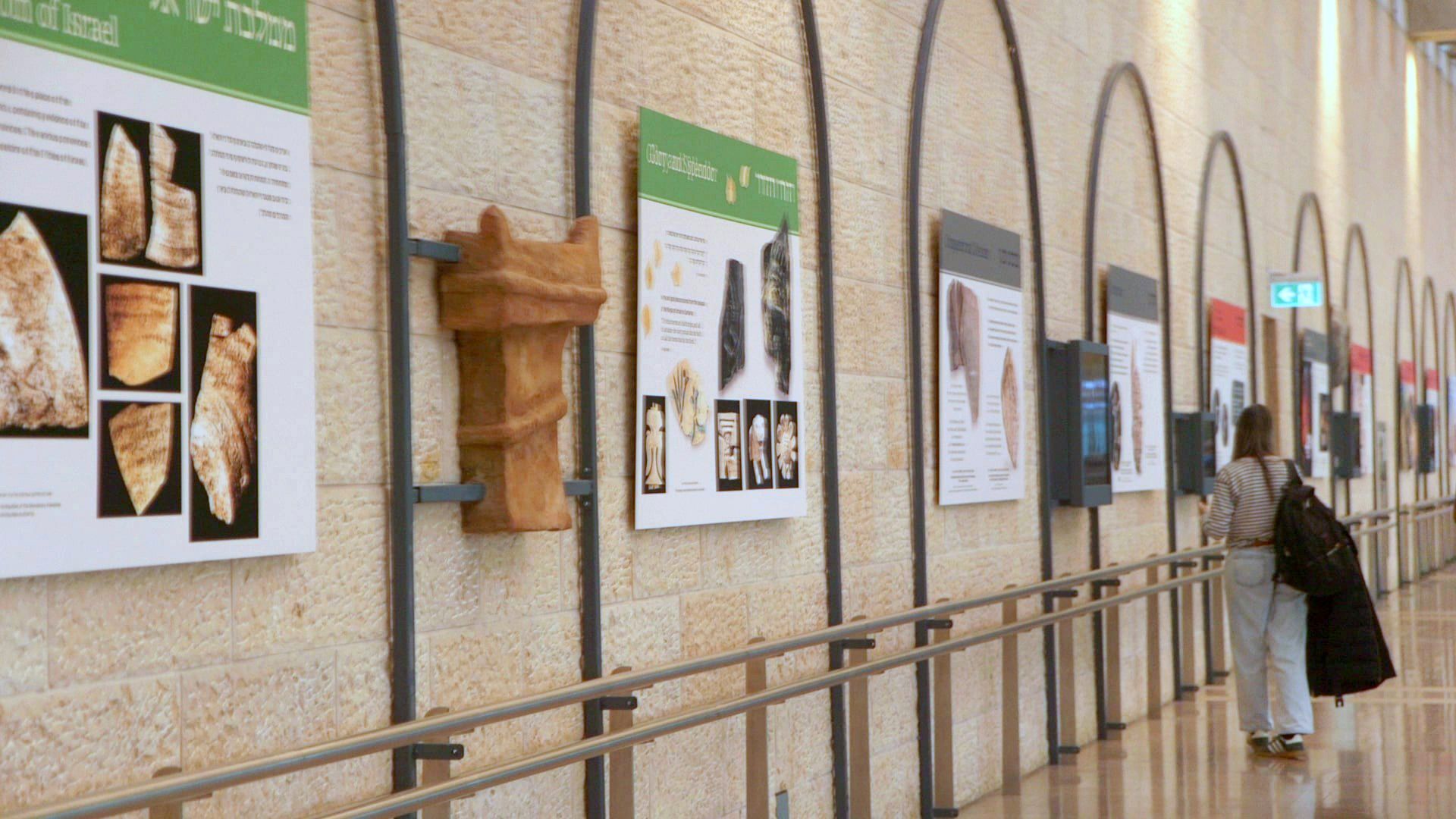
The exhibition showcases breathtaking photographs from archaeological sites and from significant moments of discovery during excavation.
Each photograph encapsulates a uniquely inspiring moment or special site, as captured by the camera lens. In addition to these powerful photographs, original and rare archaeological findings are on display, bearing witness to different periods in the history of the Jewish People.
The exhibition enables the visitor to form impressions from items, such as agricultural tools from a Hasmonean-era farm uncovered near Mount Arbel and displayed here for the first time; a Hasmonean coin hoard found in the desert; physical evidence to the name “Ahab,” the famous king of northern Israel; an original Western Wall stone weighing 5 tons; and weapons of long-gone conquerors.
Each photo and finding features a QR code that allows passengers to access videos filmed at the excavation areas, providing the opportunity to experience the discoveries in singular moments.
In addition, the exhibition displays models of important archaeological findings in the country’s history, which visitors will be invited to touch.
According to Galit Litani, exhibition curator on behalf of the Israel Antiquities Authority, “The 'Eternity of Israel' exhibition seeks to convey the powerful vitality of the Jewish People, and how they cleave to their land. We wanted to create an experience that combines the worlds of archaeology, history and culture, and gives travelers a glimpse into our people’s history, as reflected through the findings.”
Former Minister of Heritage, MK Amichai Eliyahu, said, “It is not without cause that this exhibition is set up precisely in these days, as we face national challenges and security challenges. The exhibition reminds us all of our deep roots and the Jewish People's uncompromising commitment to their country and heritage. Exposing the visitors to the eternity of the Jewish People against the background of recent events strengthens the spirit of all peoples and conveys a message of strength and hope to future generations.”
“Ben Gurion Airport is the main entry and exit gate of the State of Israel”, says Eli Escusido, Director General of the Israel Antiquities Authority. “In these times of fake news and anti-Semitism, here the hundreds of thousands of travelers from Israel and the world will meet the Jewish People’s unique story. Through the 'Eternity of Israel' exhibition, we seek to provide an exciting connective experience that reminds everyone of the depth of the roots and the eternal connection between the people of Israel and this land.”
According to Udi Bar Oz, Ben Gurion Airport Director General, “This is a unique project in Israel. This is the first time that the passenger passage combines authentic finds alongside spectacular photos. The display is already arousing great interest. Many people are stopping to look at the rare and impressive finds on display, which are a testimony to the glorious history of the people of Israel.”
About the Israel Antiquities Authority
The Israel Antiquities Authority is a statutory corporation and the leading professional institution in the archaeology of the Land of Israel, responsible for the country's antiquities and archaeological sites—their excavation, preservation, conservation, research, presentation, publication, and the stewardship and management of the national treasures of the State of Israel.
About the Helmsley Charitable Trust:
The Leona M. and Harry B. Helmsley Charitable Trust aspires to improve lives by supporting exceptional efforts in the U.S. and around the world in health and select place-based initiatives. Since beginning active grantmaking in 2008, Helmsley has committed more than $4.5 billion for a wide range of charitable purposes, including $700 million for grants in Israel. For more information on Helmsley and its programs, visit helmsleytrust.org.
Photos Emil Aladjem, Israel Antiquities Authority
- Details
- Written by Steven Aiello / DebateforPeace
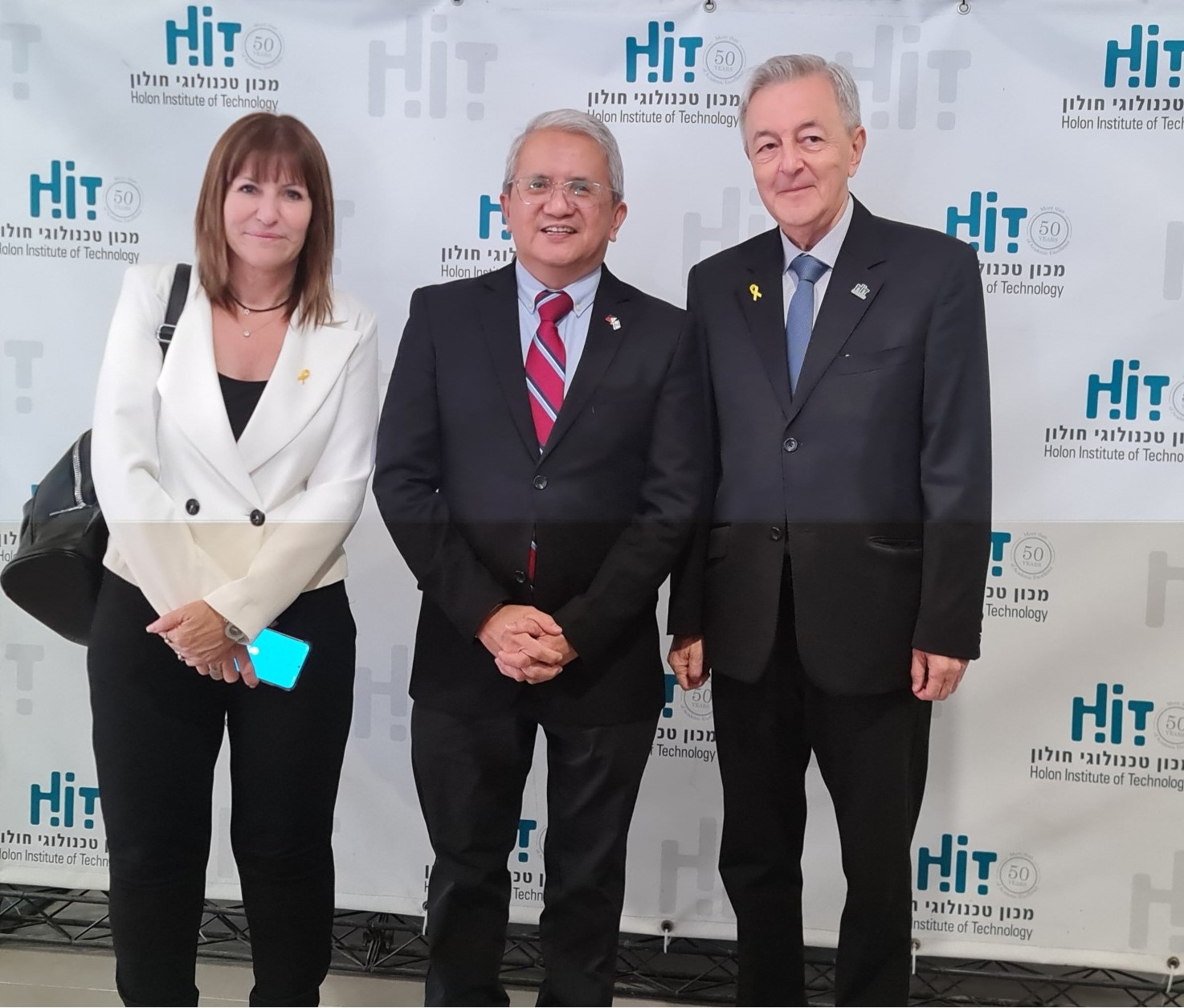
On Tuesday, January 28th, the Philippines Embassy in Israel, in cooperation with the Holon Institute of Technology, the Municipality of Holon, and the family of the late Max Weissler, hosted a special screening of the film Quezon’s Game. The event was a tribute to the historical humanitarian efforts of President Manuel Quezon in providing refuge to Jewish people fleeing the Holocaust.
The evening began with opening remarks from Professor Eduard Yakubov, President of the Holon Institute of Technology; Charge d’Affaires of the Philippines, Mr. Anthony Achilles L. Mandap; Ms. Michal Weiler-Tal, Director of the South-East Asia Department of the Israeli Ministry of Foreign Affairs; Mr. Michael Sutovskii of the Holon Municipality; and Mr. Danny Weissler, son of the late Max Weissler.
Professor Yakubov emphasized the institute’s commitment to preserving the memory of the Holocaust and noted that the issue is deeply personal for him, having lost three family members to the Holocaust. He also highlighted the troubling global rise in antisemitism and reaffirmed the institute’s role in training future leaders of Israeli society since 1969.
Acting Ambassador Mandap began his remarks by reciting the Hebrew blessing for the release of hostages, expressing gratitude for the return of Israeli hostages, and hoping for the safe return of those still held captive. He also honored the four Filipino citizens who lost their lives on October 7th while protecting those in their care. Reflecting on Quezon’s Game, Mandap emphasized that the film serves as a reminder that acts of kindness and humanity can prevail even in the darkest moments of history.
Ms. Weiler-Tal highlighted the strong historical ties between Israel and the Philippines, rooted in two pivotal events: President Manuel Quezon’s Open Door policy, which saved 1,300 Jewish lives during the Holocaust, and the Philippines' crucial support for the establishment of the State of Israel in the 1947 United Nations vote. She also cited a modern-day act of bravery by Camille Jesalva, a Filipina caretaker who saved the life of 95-year-old Nitza Hefetz during the October 7th attacks.
Representing the Municipality of Holon, Mr. Sutovskii welcomed attendees and underscored the importance of educating people about President Quezon’s Open Door policy. He emphasized that events like this bring together guests from diverse backgrounds to reflect on history’s lessons and promote humanitarian values.
Danny Weissler shared the personal story of his late father, Max Weissler, who escaped the horrors of the Holocaust and found refuge in the Philippines. He described how his father was welcomed with open arms and remained deeply connected to the country for the rest of his life. The Weissler family was instrumental in erecting a monument in the Holocaust memorial park in Rishon Lezion dedicated to President Quezon’s Open Door policy.
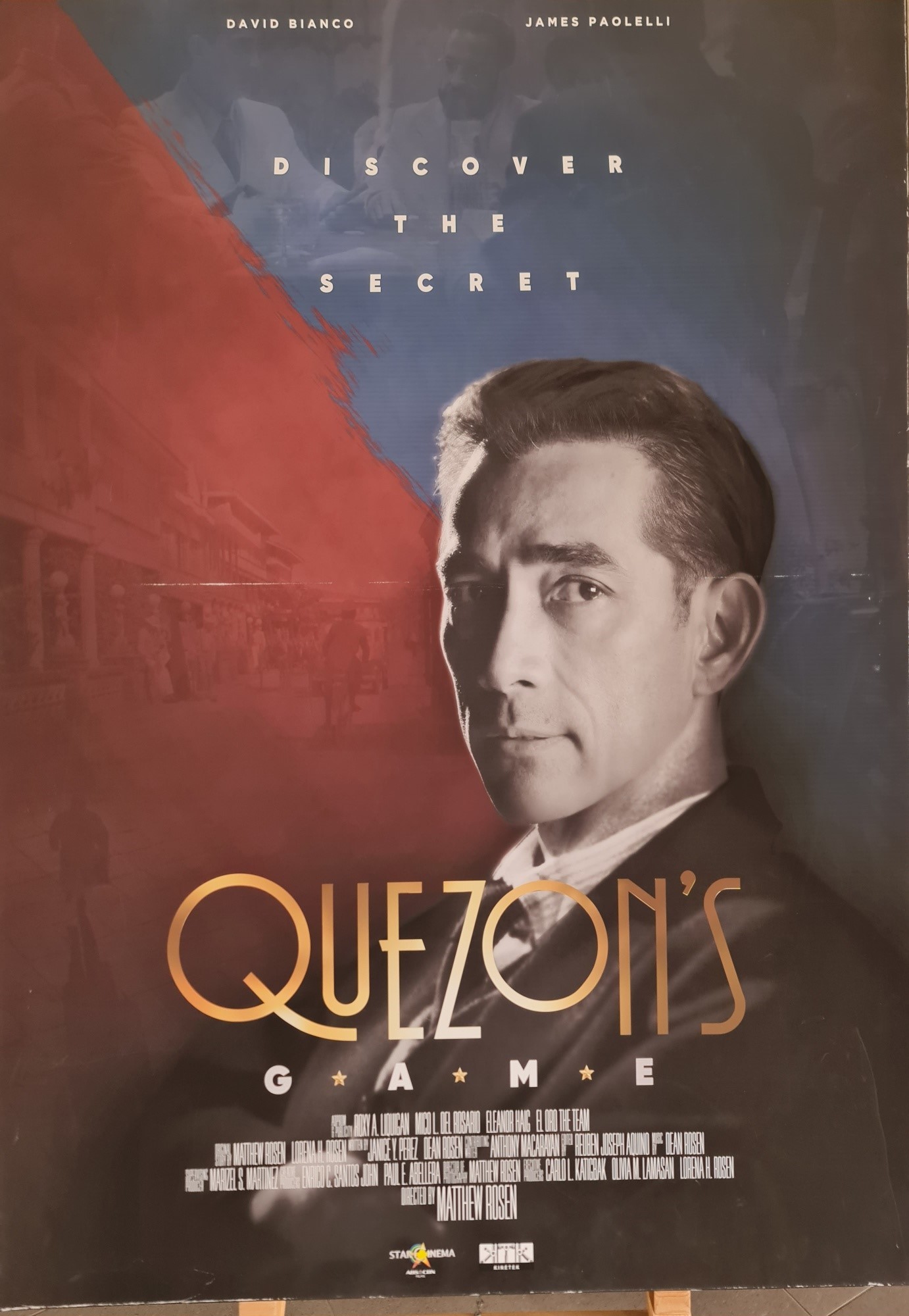
During World War II and the Holocaust, the Philippines, under President Manuel Quezon’s leadership, took a courageous and compassionate stand by offering asylum to Jewish refugees escaping Nazi persecution.
In the 1930s, as antisemitic policies intensified in Germany and across Europe, the Philippine government welcomed Jewish refugees despite political challenges. With the support of American Governor-General Paul McNutt and other key figures, Quezon worked to facilitate their safe arrival and integration into Philippine society. The film Quezon’s Game makes this story accessible via film, and thanks to the active role of the embassy of the Philippines embassy in Israel, the film has been shown in several cities throughout Israel.
The special screening of Quezon’s Game in Holon served not only as a historical commemoration but also as a reminder of the importance of preserving the lessons of the past for future generations, and standing up for morality against all odds.
https://tel-avivpe.dfa.gov.ph/
Steven Aiello
Photos Silvia G. Golan
More pics at Facebook: Israel Diplo / Diplomacy Israel / Silvia G.Golan
